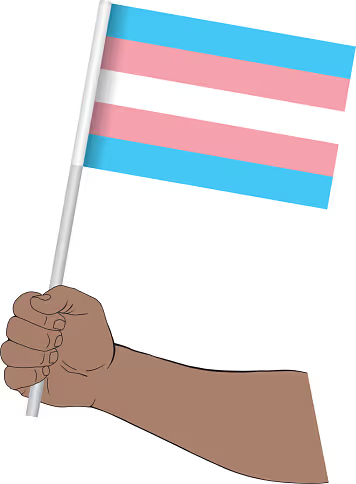
Two weeks ago, I published the first installment of our inclusive body positivity series here on the Clarity blog. I was talking about the queer community, and the unique struggles and triumphs of queer bodies and queer inclusion in body positivity. This week, I am highlighting a particular group of bodies that usually fall under the category of queer: transgender (referred to from now on just as trans) and non-binary bodies.
Let’s start with some vocabulary checks. Transgender is typically referring to people whose gender identity doesn’t match up with their “sex”, or “assigned-sex-at-birth”, based on genitalia. The language “non-binary” is a bit newer, but refers to people who consider their experience of gender to be outside of the canonical gender binary (male/female), and therefore don’t conform to either. Some people who are non-binary also consider themsleves to be trans, and vice versa! Importantly, people don’t need to adjust their appearances at all to come out as either of these gender identities. Some people think that “real” trans people are the ones who make a physical transition, which can be an important part of the process for people who experience a lot of gender dysmorphia (extreme feelings of dysphoria caused by body parts relating to the gender you don’t identify as). But all kinds of people, no matter what they may look like to you, can identify as trans or non-binary, including very feminine people passing as women, masculine people passing as men, and everything in between.
Given the difficulties laid out above about trans and non-binary identities and how bodies are tied in, you can see how body positivity would be both important and also have to work to be more inclusive. I myself am not trans or nonbinary, but one of my good friends, Teddy Goetz, is!! They kindly agreed to write a little blurb, since I firmly believe their voice on this issue is far more important than mine:
"As someone who has grappled with body-related gender dysphoria for the past 15 years, learning to lift weights as a member of my college rugby team was a pivotal experience for learning ways to feel more comfortable with and better about my otherwise distressing body. First, superficially (in the visible sense of the word), building upper body and shoulder muscle helps me feel more euphoric about my appearance and embodiment, as a non-binary transmasculine person. Second, intellectually and emotionally, finding a way of focusing on what my body can do instead of what my body looked (or felt) like was profoundly powerful for improving my mental health. Tangible gains each time I increased the weight of a dumbbell or my number of reps helped me to relate to my frame with pride, entirely divorced from appearance. For an exercise space to feel safe and affirming, it is helpful to have signage up about using locker rooms that align with gender identity and to have an all gender changing room available as well. Being allowed to use my chosen name on ID cards is also important, as is training staff on avoiding gendered language (e.g. “Have a nice day today!” instead of “Have a nice day, ma’am!” makes a huge difference in my morning). Not all transgender/non-binary/genderqueer/gender non-conforming individuals have body dysphoria, nor do all have social dysphoria, but for those of us who do, these small steps can be disproportionately impactful." - Teddy Goetz
As you can see from Teddy’s incredible blurb, body positive fitness and body postiivtiy in general has a long way to go to be fully inclusive of trans and non-binary bodies, but there are little and importnat steps that can be taken by anyone to be more inclusive! I challenge you this week to think about pronouns, and think about the ways in which you can be more inclusive of bodies and identities that aren’t your own!!